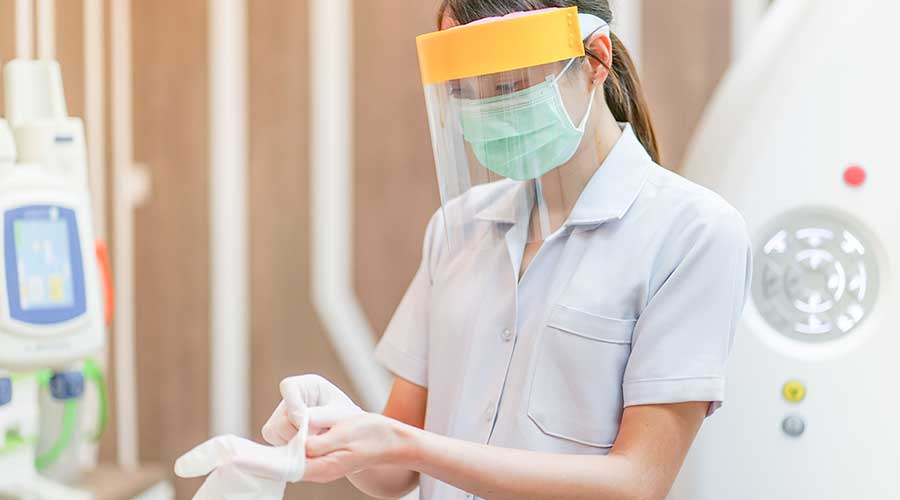Infection prevention and control is not only important in general healthcare settings, but especially in long-term care facilities. Having a solid program in place is essential for routing dangerous pathogens.
Healthcare Facilities Today recently spoke with Deb Burdsall, member, APIC Board of Directors, and long-term care infection preventionist, about the various facets of infection control long-term care settings.
HFT: What are the primary strategies implemented in long-term healthcare facilities to prevent the spread of infectious diseases?
Deb Burdsall: One of the first things is a lot of congregate care settings, such as skilled nursing facilities and assisted living facilities, do not have vigorous infection prevention and control programs led by trained infection preventionists.
So, when hit with a virus nobody has immunity to in a congregate care setting with older adults who were particularly vulnerable to this, we had a lot of deaths, a lot of illness and a lot of heartbreak. If they had more structured infection prevention and control programs so they trained people who knew what to do, it would have been helpful.
HFT: How would you define what an infection preventionist is?
Burdsall: An infection preventionist is someone specifically trained and ideally certified, not just taking a certificate class, but truly certified.
In infection prevention and control, I have a board certification in both general infection prevention and control, called CIC. I am also board certified in long-term care infection prevention and control. It takes a lot of study and a lot of knowledge base to get those certifications.
They are very rigorous certifications, but they prepare you for dealing with infection. Being an infection preventionist takes focusing on the core principles of infection prevention and control. Basically, you learn what the important core principles are to prevent germs from spreading around so people do not get sick and die.
Related: Five Key Points to an Effective Infection Control Program
HFT: How do long-term healthcare facilities ensure proper hygiene practices among residents, staff, and visitors to minimize the risk of infections?
Burdsall: Basically, what they need to do really is get people in their buildings who can help them and who are responsible for implementing best practices. These best practices are hand hygiene, use of alcohol-based hand sanitizer, having hand sanitizers at the point of care, having appropriate cleaner disinfectants, having appropriate personal protective equipment, etc.
You need people at that frontline that have been trained and are competent enough to know what to do if somebody gets sick, including not coming to work themselves. However, because long-term care has had a chronic staffing issue for a long time, we have not had enough staff in long-term care that know what to do to provide minimum care.
Then, you put an outbreak or a virus in there, whether it is COVID-19, influenza, norovirus or some of the multi drug-resistant organisms – when you add that on top of low staff, it is a setup for people getting sick. This is one of the reasons why it must be a multi-pronged approach, not just basic infection prevention and control.
It is also critical to have a trained infection preventionist on staff who is dedicated to infection prevention and control, not just designated. There is a huge difference between those two words. A dedicated infection preventionist has infection prevention and control as their primary job. Meanwhile, a designated infection preventionist can be just another hat on the head of somebody who has a lot of other critical jobs that need attending to.
If you do not have a good infection prevention and control program in place and do not have people trained to prevent the spread of infection, then you are going to have a real problem.
It is the same problem that the nursing homes experienced – you can deal with short term staffing issues for now. However, without proper staffing in the long term, if you have got germs that are spreading around, that is going to come back to bite you down the road.
HFT: What roles do surveillance and monitoring play in identifying and managing outbreaks of infectious diseases within long-term healthcare facilities?
Burdsall: It is critical and must be done in real time. You must be doing it, not looking back at it – that is called prospective surveillance. You must be thinking from this point forward: what are people seeing? What is happening? What symptoms are you looking at? What types of culture results give you clues about how to stop the spread?
If you are not paying attention to that on an hour-by-hour basis or have systems in place for that, you will find yourself playing catch up and with infectious diseases that never work. Surveillance is critical, including real time prospective surveillance. That requires somebody who knows what to look for, who understands what to look at and who knows what to do with that information.
HFT: How important is staff education and training in infection control measures within long-term healthcare settings?
Burdsall: It is critical from day one because your staff must understand the simple things like hand sanitizer, when to wash your hands, when to use alcohol-based hand rub, when to change your gloves or know when to use personal protective equipment. Those are simple things that people must know from the get-go because if they do not, then they are going to spread germs around.
All it takes is one person. You can have 10 people doing the right thing and one person not following good core principles of infection prevention and control. From there, you are going to have a problem with the transmission of infectious agents that are going to make other people sick or even make that one person sick.
Jeff Wardon, Jr. is the assistant editor for the facilities market.

 Making the Energy Efficiency Case to the C-Suite
Making the Energy Efficiency Case to the C-Suite How to Avoid HAIs This Flu Season
How to Avoid HAIs This Flu Season Design Phase Set to Begin for Hospital Annex at SUNY Upstate Medical
Design Phase Set to Begin for Hospital Annex at SUNY Upstate Medical Building Hospital Resilience in an Era of Extreme Weather
Building Hospital Resilience in an Era of Extreme Weather Ennoble Care Falls Victim to Data Breach
Ennoble Care Falls Victim to Data Breach